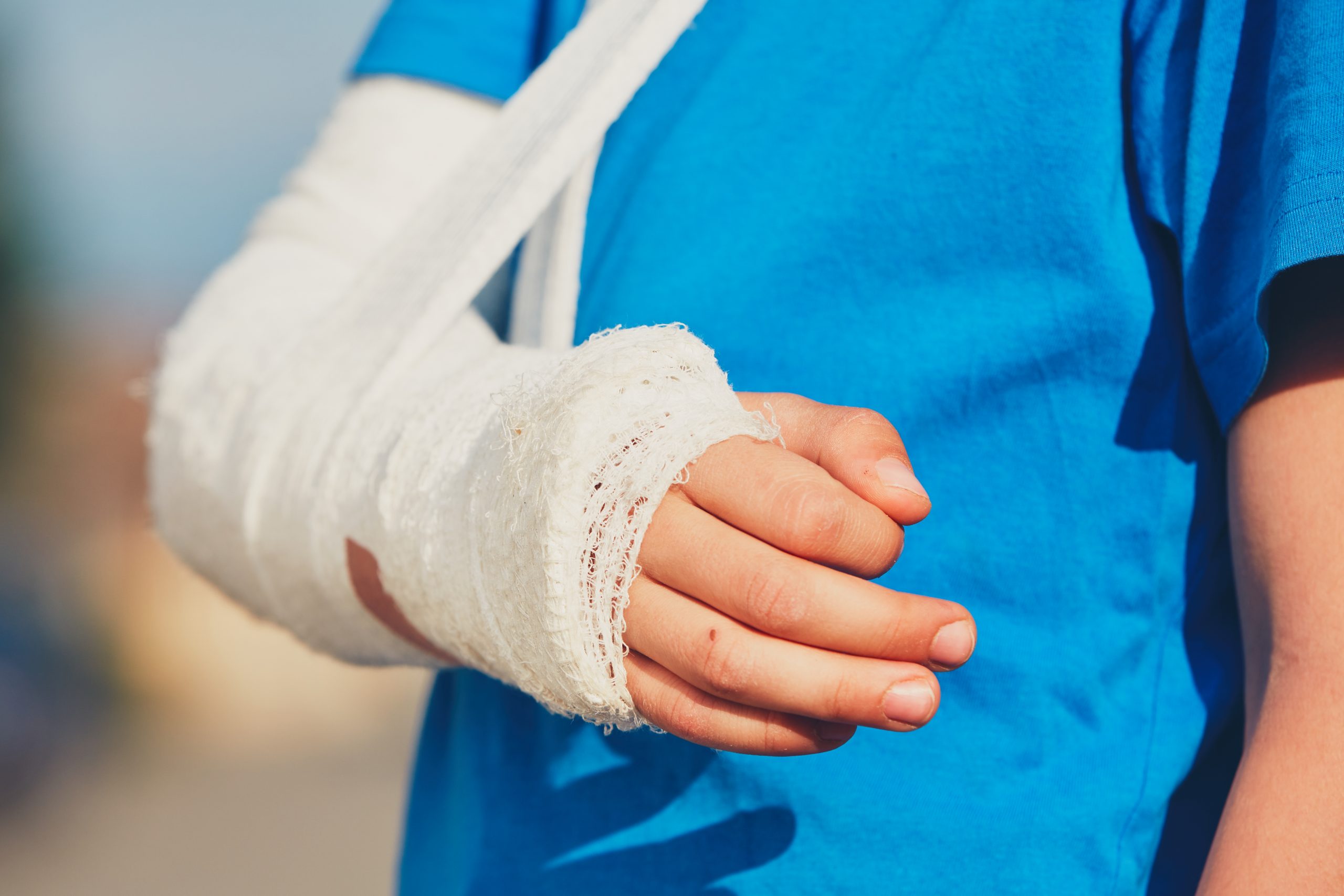Your child’s blood-curling scream assaults your ears as you see him fall. Everything is in slow motion. Your heart stops for a couple of beats as the possibilities race through your mind.
Is something broken? Is there blood? Can you deal with this at home, or do you need to race to the emergency room?
Keep reading to learn how to tell if a bone is broken, how badly it’s broken, and what to do.
Is This Bone Broken?
Technically, a bone qualifies as a fracture when it is either cracked or completely broken.
An open fracture refers to the bone sticking out of the skin, whereas a closed fracture is broken beneath the skin.
If you’re looking at an open fracture, you won’t have any question on whether the bone is broken or not. However, when you’re looking at a potential closed fracture, the diagnosis at home is a bit more tricky.
You will know you or your child has a broken a bone if one of these things has happened:
- You hear or feel the bone snap.
- You have difficulty moving the injured part of your body.
- The injured part moves in an awkward way.
- The injured part is extremely painful to the touch.
To determine if have a fracture, you’ll need an x-ray. CityHealth Urgent Care has an on-site lab and full imaging center, meaning we can perform your x-ray immediately right in the clinic, without waiting for results.
No matter the severity of the fracture, the key to fracture care is to immobilize the bone. Keep the broken area as still as possible. Do not put pressure on it, and splint it if you need to.
A less severe fracture often requires just a cast or brace. The less severe the fracture, the less structured the immobilization device.
Seeking More than Urgent Care
If you have a severe open fracture or bad break, you need to go to the emergency room.
Go to the emergency room if you suspect the following circumstances:
- A break in a large bone like your hip, pelvis, or femur.
- A fracture in your face like your skull, dental bones, or eye socket.
- A spinal fracture.
- A bone or joint is dislocated.
Medication
If you or your child has a fracture, the doctor will immobilize it with a brace or a cast. You may feel some pain still because of muscle spasms or inflammation. If this is the case, your doctor may prescribe medication that will relax muscles and reduce inflammation.
Strains and Sprains
Strains and sprains do not necessarily require immediate medical care, but many can be so painful that they are mistaken for bad sprains.
A strain is when a muscle or tendon tears or stretches, and a sprain occurs when a ligament stretches or tears. Both injuries cause significant pain and can happen to anyone.
Sprain symptoms include bruising, pain, swelling, and the inability to use the joint that you’ve injured. You will not be able to move the joint easily.
Strain symptoms include muscle spasms, swelling, trouble moving the injured area, and cramping.
If you suspect you have strained a muscle or sprained a joint, do not return to activity immediately. Athletes in particular are tempted to muscle through the pain and just keep competing. But returning to the activity could lead to further injury.
When you seek help at an Urgent Care Center, you can receive the diagnosis, treatment, and brace that you need to recover thoroughly.
Sprains are not always a simple injury, and you need a medical professional to determine how complicated the sprain is. For example, ankle sprains come in three grades. A grade three sprain may require surgery.
Sprains require immobilization similar to fracture care. When you immobilize a joint, you prevent it from bending, and you allow the stretched or torn ligaments to heal. You also give the subsequent inflammation a chance to calm down.
Medication and Treatment
Sprains and strains require rest.
Implement the RICE approach to recovery (Rest, Ice, Compression, and Elevation), and you can pair it for a short time with NSAIDs. This medication will reduce inflammation and allow the joint and subsequent ligaments and tendons to heal.
Stay Calm, Evaluate, and Seek Help
Trauma care sounds scary to some people, but if you know what to do when you encounter trauma, you can move forward with confidence.
Despite the pain or worry for your child, stay calm. While broken bones, fractures, sprains, and other trauma are painful, they can be easily fixed. Protect and immobilize the area, and seek urgent or emergency care immediately.
When in doubt, contact us. Our team of experienced clinicians and patient-centered approach is focused on getting you and your family the best medical care, as quickly and seamlessly as possible.
With CityHealth Urgent Care, getting better has never been easier.


